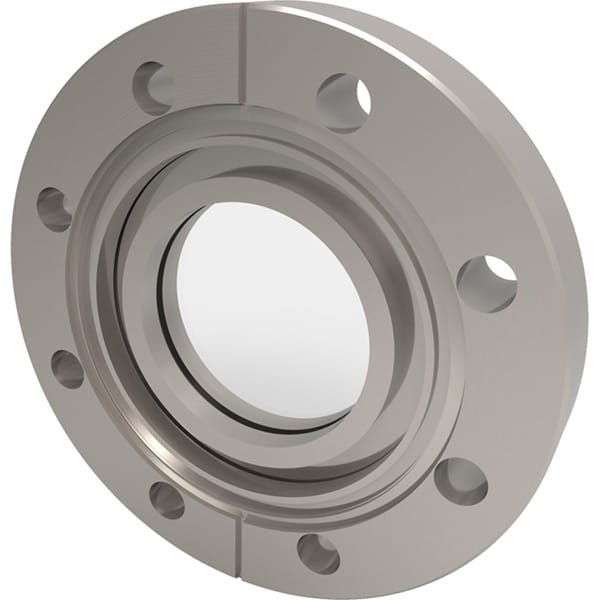CF Flanged Exotic Lens Viewports: Precision Optics for Ultra-High Vacuum Applications
CF Flanged Exotic Lens Viewports from TFM are engineered to deliver superior optical transmission and structural integrity in ultra-high vacuum (UHV) environments. These specialized viewports are built using premium UHV-compatible materials, with exotic lens options tailored for demanding scientific and industrial processes.
Each CF Flanged Exotic Lens Viewport features a knife-edge ConFlat (CF) flange sealed with fully annealed copper gaskets, ensuring leak-tight performance even during bakeouts and pressure cycling. Whether used in laser diagnostics, plasma research, or high-energy optical systems, these viewports maintain exceptional optical clarity and stability under extreme conditions.
Key Features of CF Flanged Exotic Lens Viewports:
UHV-Grade Materials: Constructed from 304L or 316L stainless steel with optically pure lenses such as Sapphire, ZnSe, CaF₂, or UV-grade fused silica, these viewports are designed to endure high temperatures, radiation, and vacuum cycling.
CF Flange Compatibility: Designed to interface with industry-standard CF (ConFlat) flanges, these exotic lens viewports integrate seamlessly into any UHV chamber or diagnostic system.
Annealed Copper Gaskets: Each viewport is equipped with fully annealed copper gaskets, which minimize thermal and mechanical strain on the lens, ensuring long-term sealing integrity and optical precision.
Shutter Compatibility: For processes prone to deposition (e.g., sputtering, evaporation), a viewport shutter is strongly recommended to protect the lens from coating build-up and optical degradation.
Applications of CF Flanged Exotic Lens Viewports:
Laser and ion beam diagnostics in UHV chambers
Infrared, ultraviolet, or visible-range spectroscopy
Vacuum-compatible optical access for research reactors
Custom optical monitoring setups in deposition systems
TFM’s CF Flanged Exotic Lens Viewports are trusted by laboratories and vacuum system designers worldwide for their optical performance, vacuum reliability, and robust construction. When optical clarity and system purity are critical, these viewports deliver dependable performance with precision-engineered quality.





Reviews
There are no reviews yet.